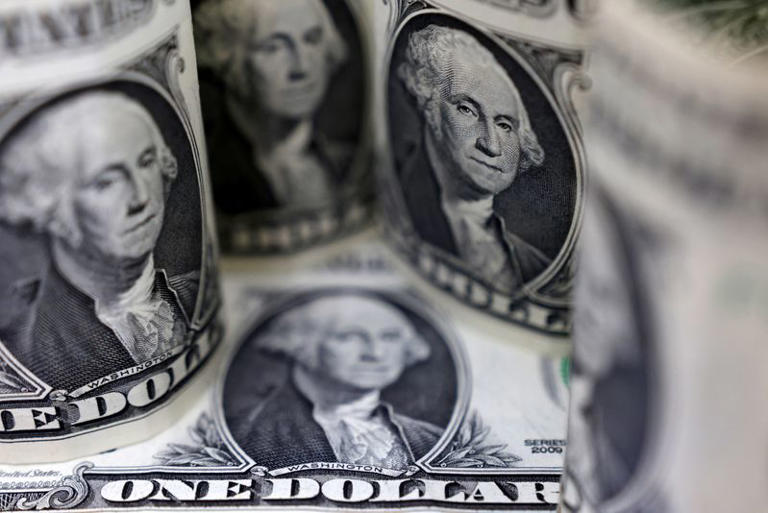On Wednesday, the dollar demonstrated resilience, bouncing back from a recent three-week low following Federal Reserve Chair Jerome Powell’s cautious stance on potential U.S. interest rate cuts. Powell’s remarks, delivered during the first day of his Congressional testimony, underscored the Fed’s requirement for greater confidence in inflation approaching its 2% target before considering any rate adjustments. Despite acknowledging a cooling job market and recognizing dual risks to the economy, Powell refrained from committing to a specific timeline for rate cuts.
The dollar index, a measure of the USD against major global currencies like the euro and yen, stabilized at 105.14 after a modest 0.1% increase the previous day. Earlier in the week, the index had dipped to its lowest level since mid-June following unexpectedly soft U.S. payrolls data, highlighting market sensitivity to economic indicators.
Market sentiment reflected cautious optimism regarding potential rate cuts, with traders pricing in a 73% probability of a rate reduction by September, slightly lower than the 76% figure from earlier assessments. There is stronger conviction in a second rate cut by December, although Powell’s measured approach suggests that economic data releases in the coming months could sway Fed decisions.
Taylor Nugent, senior markets economist at National Australia Bank, noted Powell’s prudent strategy of avoiding premature commitments to rate cuts. Nugent emphasized the pivotal role of upcoming economic data, including three forthcoming Consumer Price Index (CPI) reports and two payrolls releases expected before September. These data points are likely to shape market expectations and influence future monetary policy decisions.
Against the yen, the dollar strengthened by 0.13%, reaching 161.525 yen, indicating market confidence following Powell’s testimony. In contrast, the euro held steady at $1.0815, reflecting stability in the eurozone amidst global economic uncertainties.
Conversely, the New Zealand dollar depreciated by 0.55% to $0.60915, reversing from Monday’s three-week high. This decline followed indications from the Reserve Bank of New Zealand (RBNZ) that it anticipates inflation to return to target levels in the latter part of the year. This stance marks a departure from earlier hints of potential rate hikes.
Meanwhile, the Australian dollar experienced a marginal 0.1% decrease to $0.67345, despite recently achieving a six-month peak earlier in the week. Market analysts observed that ongoing developments in inflation, employment trends, and global economic conditions will likely continue to influence currency markets and shape investor sentiment in the near term.
In summary, while Powell’s testimony set the tone for current market expectations regarding U.S. interest rates, the trajectory of economic indicators remains pivotal. Investors are keenly awaiting upcoming data releases to gauge the Fed’s future policy direction and anticipate potential impacts on global currency markets.
